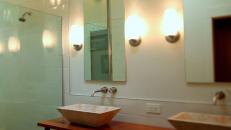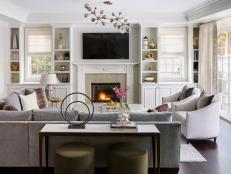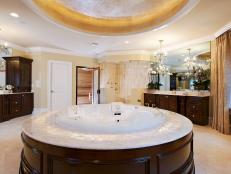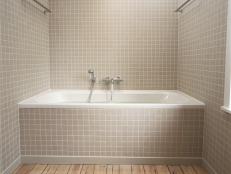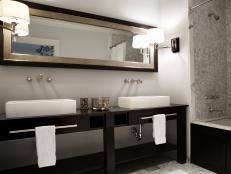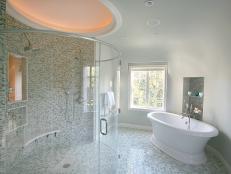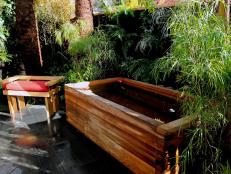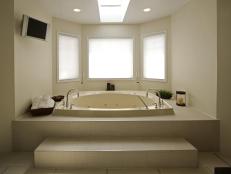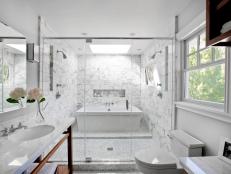Transitional Bathrooms
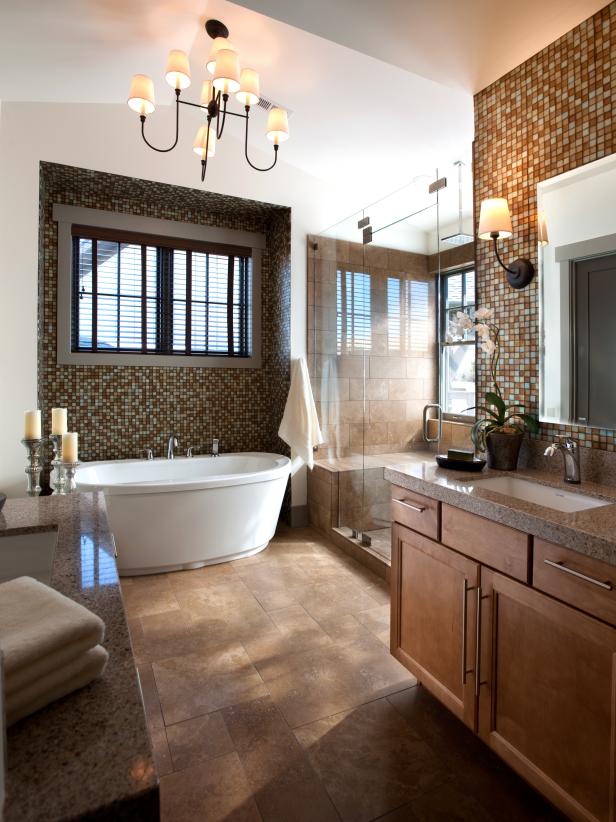
Transitional bathrooms are defined as combining elements of one design era with those of another. Oftentimes the design elements are from adjacent eras, where one prevalent design and decoration style began to give way to another.
27 Before-and-After Bathroom Makeovers
See All PhotosA great example of a transitional bathroom would be a space where the homeowner features stoically traditional fixtures like a porcelain claw-foot tub and pedestal sink with contemporary or modern furniture in the form of angular, unadorned cabinets or other storage elements. The combination of traditional, vintage or historical design elements with more modern or contemporary ones often appears naturally in homes, as items are acquired over generations, so this style is at once familiar and aesthetically appealing.
A great place to start if you're considering a transitional bathroom design is with the "big ticket" items in your bathroom — the tub or shower, sink, cabinets and toilet. By choosing the right combination of elements to feature in your transitional style, you can create a design that's seamlessly traditional and contemporary at the same time.
Many homeowners focus on a centerpiece for their transitional design focus, often choosing from the list of major design elements. Since tubs often take up major real estate in bathrooms, they can be a great choice for a bold focal point in a transitional design. And they can go either way, from contemporary to traditional—placing a grand, claw-foot porcelain tub in the midst of a modern cabinet design can be as effective as pairing arts-and-crafts cabinets with a striking bowl-shaped modern tub.
A shower stall can also carry a transitional theme forward. An open format, stand-up shower with glass walls and doors strikes a particularly modern pose. By pairing this design with the traditional bearing of a large porcelain tub, perhaps with dark wooden sides to add even greater visual interest, artisanal aesthetic and gravity to the design, different design influences and eras can be seamlessly incorporated. Similarly, a modern vessel sink on an angular cabinet featuring stone countertops can be paired with a vintage, standalone tub and shower combination. Mixing and matching modern or vintage toilet designs is also an option, as they too can create contrast with contemporary or traditional elements of a transitional design.
Surfaces are another great way to carry a transitional bathroom design theme. Flooring can take the form of substantial, traditional wooden planks, and pair with exposed wooden beams for a rustic, colonial effect. At the same time, contemporary cabinets can offer a sleek and streamlined eye toward the future. Or, in reverse, floors can feature smooth and elegant blonde wood or slate tile, and cabinets can reflect a more handmade, arts-and-crafts look with crown molding and elegant hardware.
Decor elements can also emphasize a transitional design. Pairing a sleek, digital wall clock with vintage artwork or antique apothecary items arrayed on a shelf can be a great way to hint at the passage of time and reap the benefits of multiple eras of design.











